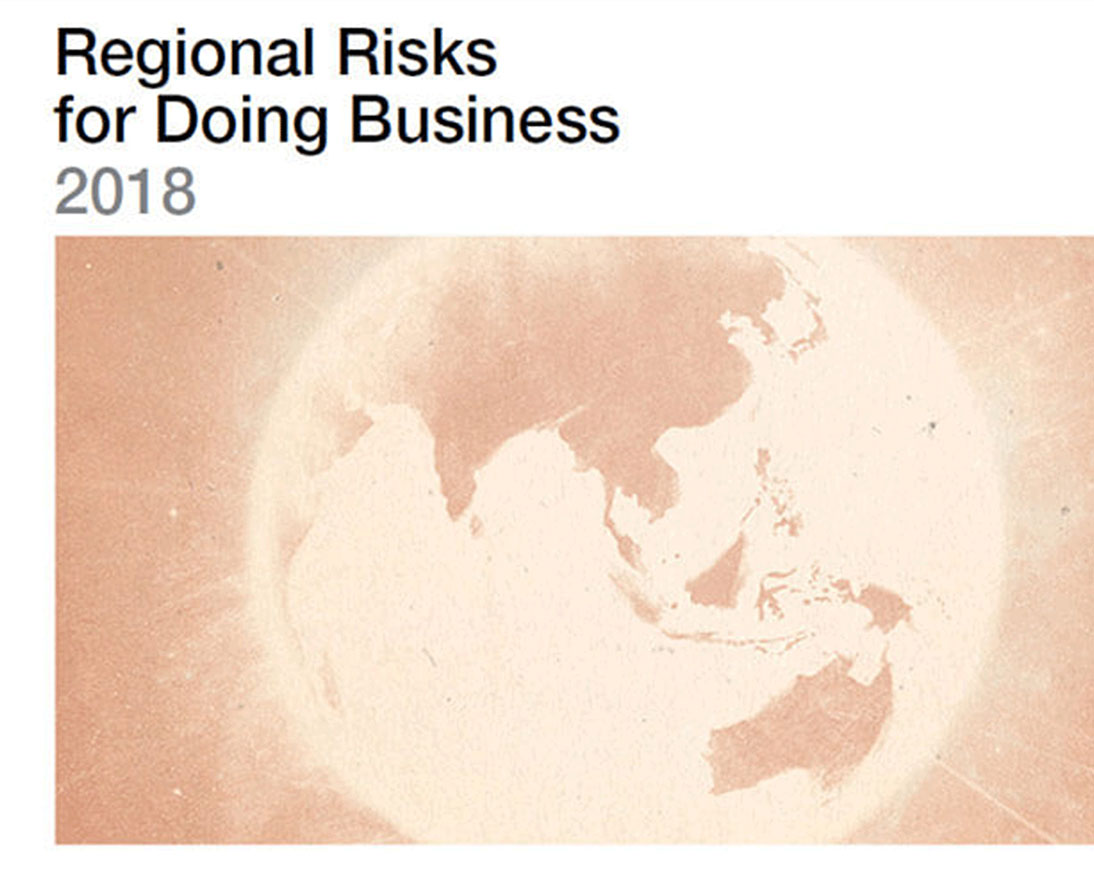Top risks for doing business in Asia Pacific
Global risksArticleNovember 12, 2018
A perspective from Zurich’s APAC CEO on the key risks for doing business in the region
When I first moved to Hong Kong in 2005, the GDP across the Asia Pacific (APAC) economies was about 23% of the global GDP. Today, it’s closer to 35%. This speaks of a rapid development and growth over a relatively short period of time. The region is home to 61% (4.4 billion) of the world’s total population including three of the world’s most populous countries. Together, China, India and Indonesia account for 40% (2.9 billion) of the world’s population1.
Given its market size, positive demographic and socio-economic trends, APAC continues to present significant growth opportunities. However, this growth comes with risks which vary depending on the unique characteristics and economic development stages. While the just released Regional Risk for Doing Business Report 2018 of the World Economic Forum reveals differences between the markets, let’s explore some of the common themes that stand out.
Income protection gap amidst the changing demographics
A key characteristic of APAC’s changing demographics is its ageing population. By 2050, it is projected that 32% of the population in China and Japan will be over 60 years old2. This will inevitably cause strain on the social benefit structure, medical networks and government spending. Compared to the Western countries, insurance density is fairly low across the region despite the increasing affluence. As a result, we see a significant income protection gap, which would negatively impact families should disability or death happen to the bread winner.
These are important factors for businesses to consider. Economic performance is closely related to changes in working-age population and dependency ratios which in turn impact labor force, productivity and economic growth.
Navigating the regional and national governance framework
Geo-political factors and a myriad of regulations within the region can also make it challenging for businesses. The good news is that we have seen significant progress over the past few years with market liberalization helping to reduce protectionist measures. Across the region, regulators in the financial services industry are increasingly focused on transparency, good governance and customer protection. This is creating a foundation for sustainable and profitable growth in the industry.
The price of economic development
While economies have benefited from the growth, it is no surprise that inflationary pressures have contributed to various risks – asset bubble, strong currency and soaring medical costs. Years of hectic construction activity and easier access to debt have resulted in huge increases in real estate value while creating concerns about oversupply and unaffordable asset prices in some markets. A strong currency affects the cost of goods and services as well as demand from importing countries. As healthcare costs become less affordable, we can expect the health protection gap to widen even more.
A long-term view on the environment
The region has also been experiencing adverse effects of climate change in recent years as seen by the number of large natural calamities – super typhoons, floods, earthquakes and tsunamis in Hong Kong, Japan, Indonesia and the Philippines. These devastating large scale events cause extensive human and property losses and disrupt growth. A massive under-penetration of catastrophe loss insurance is putting tremendous strain on the private and government resources as a result of these large calamities.
Recipe for success
Despite the risks, APAC will continue to be the growth engine for the global economy. I believe the continued rise of the middle-class, improved financial literacy and positive demographics will propel this growth.
It is important to note that a one-size-fits-all approach will not work here. Companies will need to focus on developing local expertise, relationships and talent. Embracing the sheer diversity across the region and adapting to local nuances are instrumental to succeed in APAC.
1 SwissRe Sigma Report – Asia Pacific Demographic Trends
2 Worldbank – World development database







